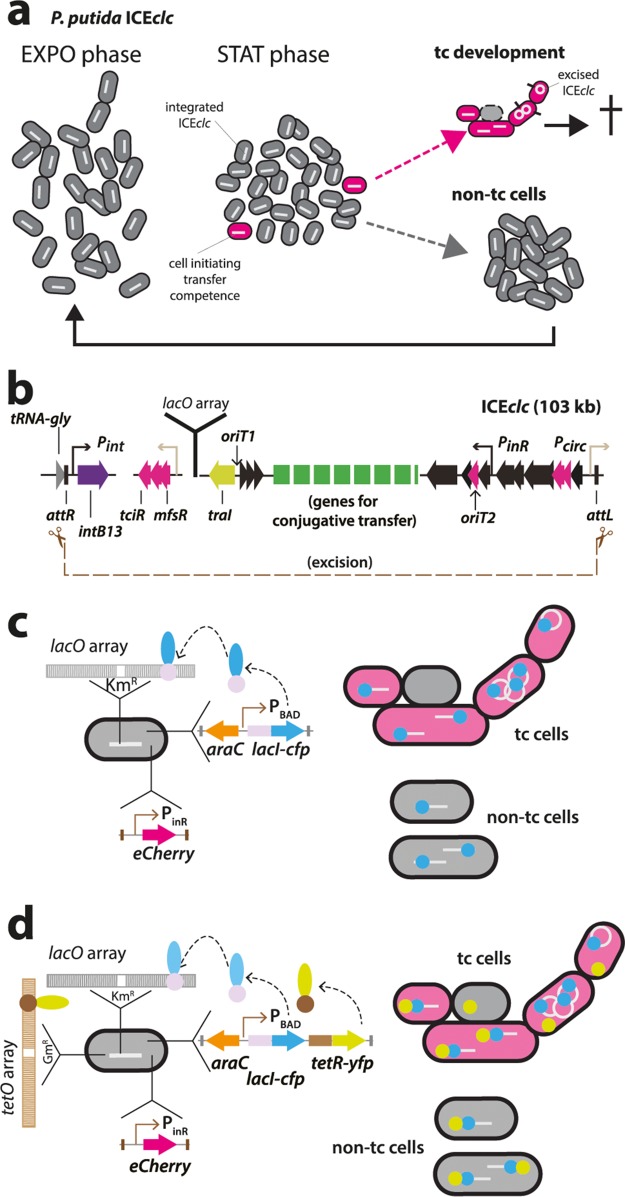FIG 1.
Principle of ICEclc detection in individual and transfer-competent Pseudomonas putida cells. (a) ICEclc remains integrated and silent in exponentially growing cells (EXPO, white bars in gray cells). Three to 5% of cells under nongrowing conditions (STAT) activate the core ICE promoters for its transfer competence program (magenta cells). Upon new nutrient addition, the transfer-competent cells (tc) excise (white circle) and transfer the ICE (black protrusions from cells). tc cells are impaired for cell division and frequently lyse (dashed cell outline). Non-tc cells continue to divide normally in exponential phase. (b) Schematic outline of ICEclc, its recombination boundaries, positions of genes mutated in this study, and insertion position of the lacOARRAY. (c and d) LacI-CFP single or LacI-CFP/TetR-YFP double fluorescent focus formation by ectopic expression of a single-copy chromosomally inserted arabinose-inducible lacI-cfp or lacI-cfp/tetR-yfp gene construct. Fluorescent protein binding to the 240-fold-copied cognate DNA binding site results in visible foci, as illustrated schematically. Cells are colabeled with a single-copy chromosomally inserted fusion of echerry to the PinR promoter of ICEclc, which is active exclusively in tc cells. tc cells losing the ICE upon excision are depicted in gray.

